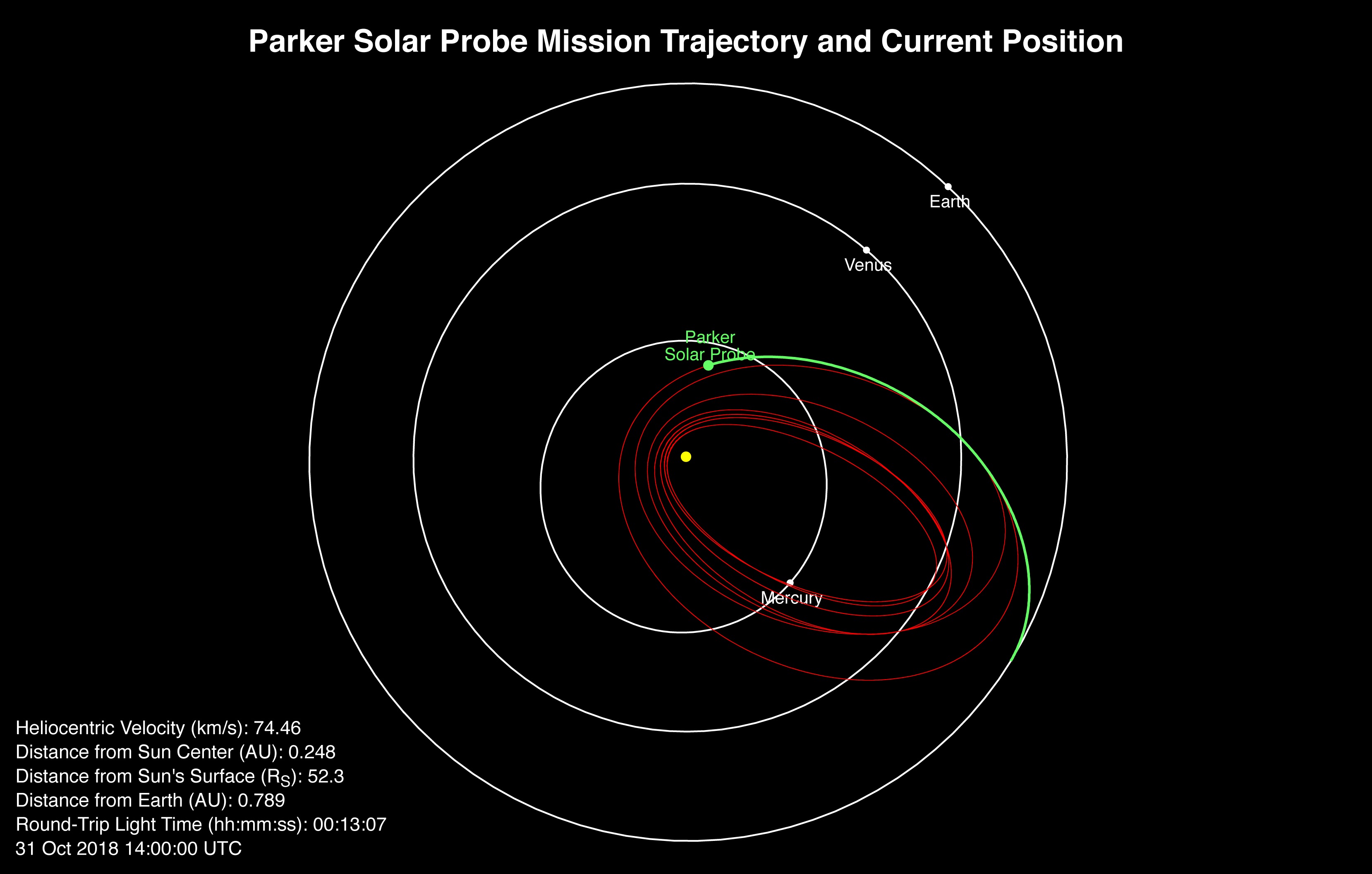NASA's Parker Solar Probe Just Started Its First Skim Past the Sun
NASA's Parker Solar Probe has had a big week: on Monday (Oct. 29) it broke two world records and on Wednesday (Oct. 31) it began its first close pass over the sun.
That maneuver is the first of 24 planned science encounters with the sun, which will last until 2025. This time around, the spacecraft will reach its closest point to the sun on Nov. 5 at about 10:28 p.m. EST (0328 GMT on Nov. 6), according to NASA.
At that point in its voyage, the spacecraft will be just 15 million miles (24 million kilometers) from the surface of the sun and will be traveling at 213,200 mph (343,000 km/h).

During the flyby, the Parker Solar Probe will be unable to communicate with Earth because the sun produces such enormous amounts of radio waves that they will drown out the spacecraft's signals. But the probe is designed to take care of itself, autonomously troubleshooting problems and twisting to stay safe from the sun's overwhelming heat.
And all the while, the spacecraft's instruments will be working to crack the mysteries of the sun that powers our every moment here on Earth. Four different sets of instruments will study the structure of the star's outer atmosphere, which scientists call the corona. We may even get our first image from within that corona, thanks to a camera aboard the spacecraft that's already snapped an incredible picture of Earth during its journey.
There's just one catch: Because of the probe's alignment, scientists won't get the data from this week's observations for a few more weeks.
Email Meghan Bartels at mbartels@space.com or follow her @meghanbartels. Follow us @Spacedotcom and Facebook. Original article on Space.com.
Get the Space.com Newsletter
Breaking space news, the latest updates on rocket launches, skywatching events and more!
Join our Space Forums to keep talking space on the latest missions, night sky and more! And if you have a news tip, correction or comment, let us know at: community@space.com.

Meghan is a senior writer at Space.com and has more than five years' experience as a science journalist based in New York City. She joined Space.com in July 2018, with previous writing published in outlets including Newsweek and Audubon. Meghan earned an MA in science journalism from New York University and a BA in classics from Georgetown University, and in her free time she enjoys reading and visiting museums. Follow her on Twitter at @meghanbartels.









